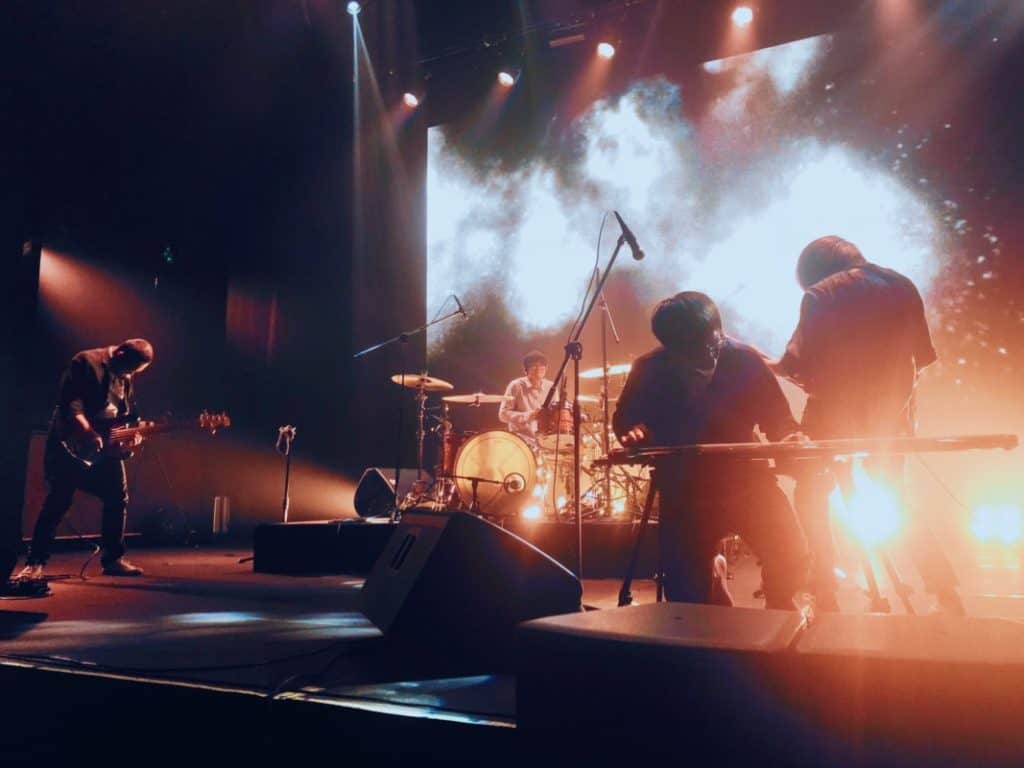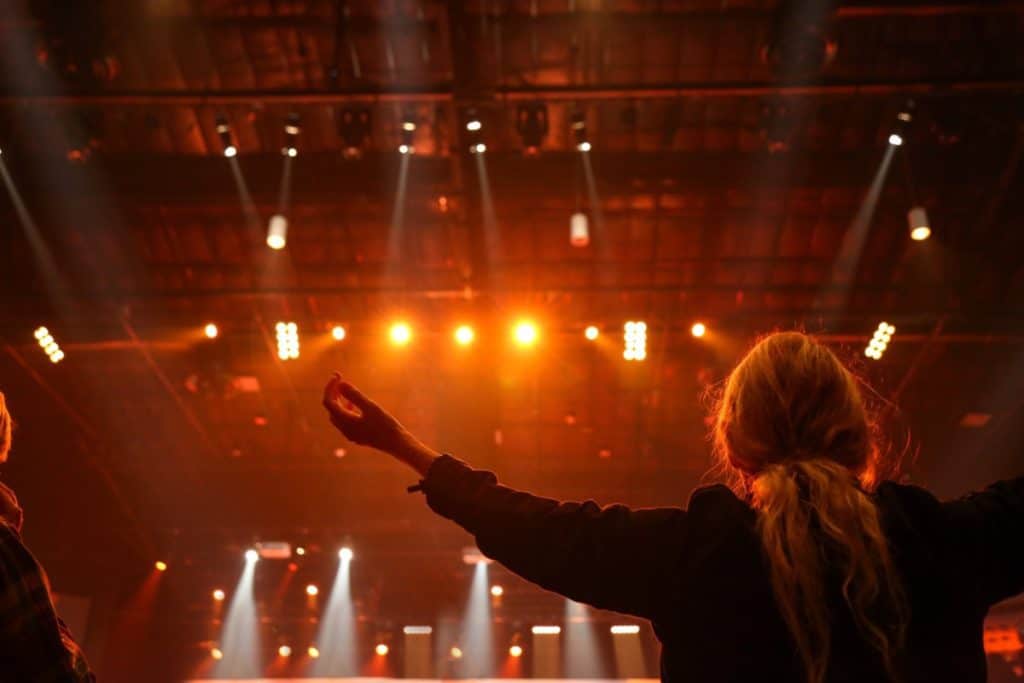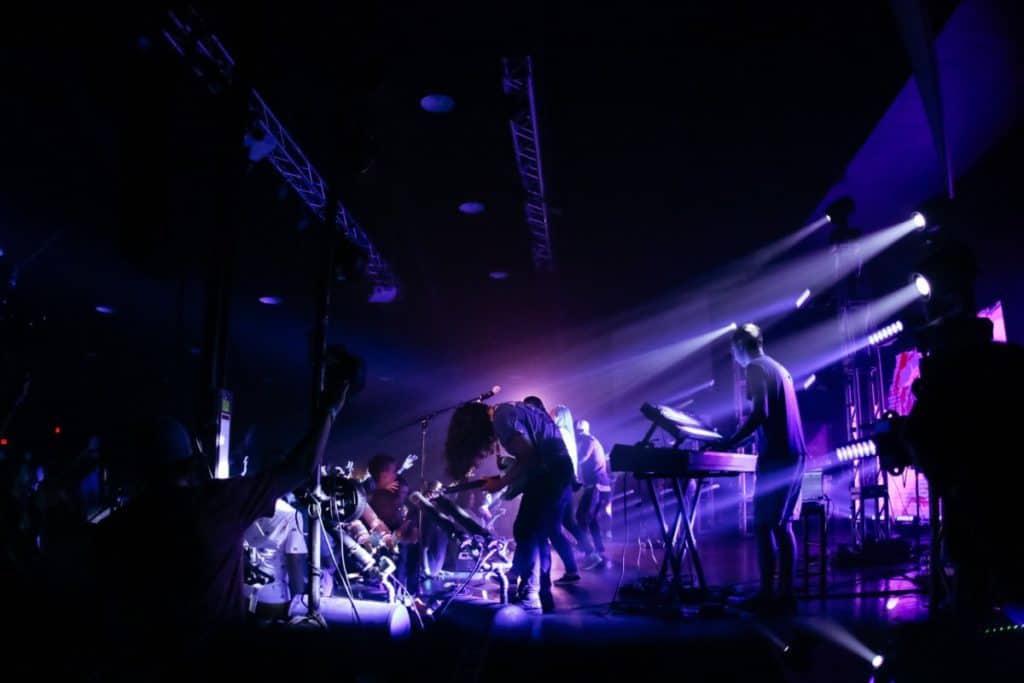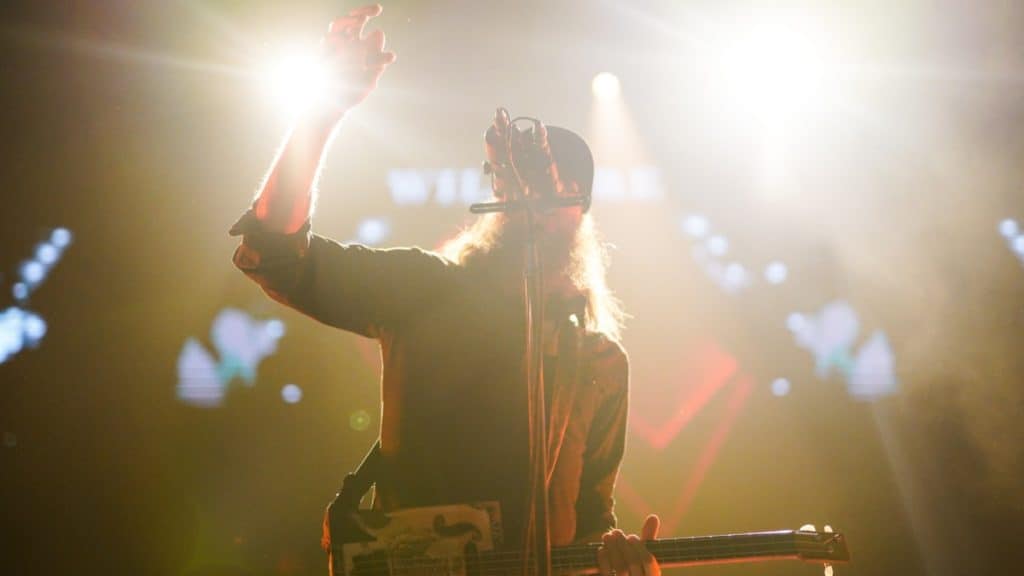
When the crowd dies down after a show’s big finale, the band leaves the stage, but the fans know it’s not time to clear out of the venue yet.
The faint cry of an “encore” echoes through the audience and grows louder as other fans join in. Encore! Encore! Encore! And with just a few chants the headliner is back on stage and ready to play a few more of their hits.
But where did that tradition start? And why do concerts have encores anyways?
Encores originated from orchestra concert halls in the 19th century, but transitioned into praise for rock stars in the 60s. Audiences called for encores after large concerts when they felt the show deserved to be commended. However, the act of calling for an encore has become somewhat cliché, or commonplace, and now occurs after most sets.
In this article we’re going to drive deeper into the origin of encores, why we still have encores and how they’ve become something we expect to happen after every show.

Where Did Encores Originate?
Before Spotify, Apple Music, Youtube, or even CDs music lovers would attend grand concert halls to listen to the newest music from renowned composures.
After a concert ended during the 18th century, wealthy patrons of the audience would request to hear their favorite song of the set again, since they couldn’t listen to it at home. This extra performance became known as an “encore,” which is the French word for “again.”
On occasion, patrons might request an instant replay of a song, where the orchestra might repeat a movement of a song that gathered a lot of applause.
For example, at the premiere of Mozart’s Marriage of Figaro, 1 May 1786 many pieces received an enthusiastic encore, which nearly doubled the length of each performance.
At one point encores were actually banned from many opera houses citing that they caused disorder.
Very quickly, the idea of encores became associated with less-luxurious performances, which may be why the rock genre picked it up in the 60s.
Known for promoting disorder and encouraging revolt against aristocratic social views, rock music transformed the tradition of the encore into a staple of the genre.
What was once reserved for grand concertos now riled up hardcore rock music fans.
Another influence of modern encores began in Broadway. Audiences would call actors back onto the stage to take a bow, which trickled into rock concerts when bands would leave the stage giving the audience a chance to call them back again.
Fans have even customized their encore calls for some bands.
In the early days of The 1975 the band saved their song, “Sex” for their encore. After leaving the stage the audience knew better than to yell “encore,” instead they would desperately cry out, “We want sex!” “We want sex!” to which The 1975 would magically appear back on stage to deliver.
Back When Encores Were Spontaneous
With the explosion of rock music during the 60s and 70s, encores also became more popular.
However, they were still saved for the largest and most celebrated musicians. You know, bands like Led Zepplin, The Rolling Stones, Aerosmith, etc.
Some bands took it upon themselves to decide when they would play an encore. The Who would only do an encore when they thought the show was extraordinary, not just when the fans asked them to.
However, there were a few artists that became notorious for not delivering encores.
Elvis Presley, for example, did not play encore performances because his manager, Colonel Tom Parker, refused to let him. He thought the King of Rock ‘n’ Roll should leave fans wanting more. This coined the infamous phrase “Elvis has left the building,” — letting the fans know the “Can’t Help Falling In Love” singer would not be back on stage.
Ironically, another Elvis also had a unique way of telling fans he wouldn’t be playing an encore. British rocker Elvis Costello had his manager blare loud white noise through venues’ loudspeakers at the end of his shows to clear out fans that wanted encores. A bit harsh maybe, but they definitely got the message.
The Beatles – maybe you’ve heard of them – didn’t play encores because they physically couldn’t. After their shows ended they were quickly ushered to a getaway car to avoid the mobbing fans chasing after them.
All of these monumental bands and rockstars took their own stands on encores. Whether they played them or not, they knew encores should be saved for the truly immense performances.
So, how did they transition from unique experiences to commonplace clichés? Two words: Bruce Springsteen.

How Encores Became Something We Expect To Happen
Pretty much everyone blames Springsteen for the tarnished reputation of the encore, but especially former Washington Post columnist David Segal.
In a 2004 column, Segal said, “It was the Boss who transformed the rock show into an iron-man event, playing four-hour marathons, staggering back to the stage with the E Street Band time and again, their sweat and stamina part of the spectacle.”
Springsteen encores started three hours into the show – three hours in! A typical show doesn’t even last half that long.
It’s safe to assume, after three hours, people weren’t exactly dying for, “One more song!”
“You left a Springsteen show drained, and you assume he left on a stretcher,” Segal said.
And that marathon-style show inspired many other iron-man style performances, slowly erasing the spontaneity of encores after each show.
Bands like The Cure and performers like Prince exhausted the number of encores that could be played at a show. Whether they played one very long encore or multiple encores in a row, some of their encore sets lasted longer than the initial set.
On several occasions, The Cure played up to five encore and Prince was known to play up to seven.
Other bands started to feel pressure to perform an encore or even several to compete with these icons. By the 90s the encore was deeply rooted in most rock shows and they even started to save their big hits for last.
Although Segal thinks so, Springsteen is not the only factor to blame in the depletion of encores.
With the intricate lighting and computer visuals involved in modern performances, preplanning is important for shows. Encores now need to be planned for logistical reasons so the shows can be tailored to venue curfew and set-list lengths.
Encores have also become safe — they are no longer spontaneous and unpredictable.
When a performer like Billie Eilish leaves the stage before singing “bad guy” you know exactly what’s going to happen. She’ll be back on stage in 2 minutes, whether the crowd is screaming for an encore or not — she’s going to play it.
Instead of being a complement to the performers, encores have become a safe haven for artists to play their crowd-pleasers as they hope to ensure that the set ends on a good note and that their fans leave the venue feeling satisfied.

Why Artists Walk Off Stage When Everyone Knows The Show Isn’t Over
In one of my first bands, I learned the importance of having an encore prepared, even if you don’t think you’ll need one.
During my senior year of high school, I started a band with a few of my best friends. We spent months writing the best songs that we could and put out a record we were immensely proud of.
We only played a few small shows before everyone headed off to college, but the music still resonated within our local music scene.
A few years later, we decided to get the band back together for a reunion show at The Pike Room in Pontiac, MI. It was the holiday break and we just wanted to play together one last time.
We didn’t expect many people to show up, but we knew we would at least have a small turn-out of family and close friends.
At one of our rehearsals, just a few days before the show, we were putting together our setlist and someone raised the question, “If we play all of our songs, what happens if we get an encore? Should we intentionally not play one of our songs, just in case we get called back to the stage?”
We hadn’t played a lot of shows together so we didn’t really know what to expect.
We hadn’t been a band in almost four years and we were debating the idea of playing an encore. It was an odd feeling — almost pretentious.
Did we really think that this final show would be so impressive that the 15 kids who still care about our band would want us to play an encore?
Ultimately, we decided it was pretty unlikely that we’d get asked to play an encore. We agreed on a setlist and didn’t leave anything out for an encore.
The day of the show came, and we had only sold a few pre-sale tickets online. We waited in the green room until it was our turn to play The room was packed — our entire high school had shown up to support our band.
We played every song we had written as a band, even a few that we weren’t able to record before everyone parted ways. We left everything we could on that stage because we knew it was probably the last time we’d get to play together.
We finished our set and before we could even walk off stage, they started chanting, “One more song! One more song!”
We looked at each other on stage like, “Are you kidding me?!”
We ended up playing a song we’d already played, again, because we literally had nothing else.
It was still a fun show — I don’t think anyone who was there to see us play really cared that we played the same song twice — but it was a lesson I learned about being prepared.
It suddenly made sense to me why I’d seen other bands walk off the stage, knowing that they were going to come back for an encore, regardless of if the crowd asked them to or not.
They don’t want to get caught on stage with nothing else to play.
Not only does planning to play an encore help you be prepared for one, but it also adds to the performance.
Nobody wants to see the kid next door up on stage singing songs about how hard his life is. People want to see an alien — they want to be entertained.
Walking off stage, suddenly, without any explanation, and then coming back for more is like waiting for the bonus clip after the credits of Marvel movies. It might be a little cliché, but people love that shit!
It might seem like a pretentious thing to do, but it’s better than not having anything to play.
If you’re in a band that’s closing the show, and you’re proud of the performance you just gave, then give the people what they want — play an encore — just do it in a way that’s genuine to your band.

How You Can Make an Encore Feel Genuine
The famous “Margaritaville” singer, Jimmy Buffett, is known for his exceptional and unique encore performances.
After Buffett ends his set, he and the band leave the stage and return for an encore set. Like most bands, the encore consists of two or three fan favorites while they intermittently introduce members of the band to the audience.
What happens next makes Buffett’s live performances so special — everyone leaves the stage, but Buffett comes back out alone to play an intimate second encore.
His hardcore fans stick around, waiting in anticipation to hear which of Buffett’s acoustic ballads will be the final song of the night. Usually, it’s an obscure song choice – not one of his hits – that takes the cake.
So, if you’re looking for a way to make your bands encore special, take a page from Buffett’s book.
Most bands play the same songs for encores every night, in identical order.
If you want to stand out think of the encore as an ideal moment for a rarity — that could mean an acoustic version of one of your popular songs or maybe a cover song you’ve been working on.
You could also mix your genres for an unexpected surprise. Billy Currington is the perfect example of this. When the country artist first started headlining shows his encore setlist was a mix of his songs and covers of songs from different genres.
The five-song encore began by covering R&B singer Al Green’s “Let’s Stay Together.” Then came a cover of Hank Williams Jr.’s “Family Tradition.” These two covers were followed by his own song, “Must Be Doin’ Somethin’ Right” and then – to the audience surprise – another cover song, Stevie Wonder’s “Superstition.” Currington wrapped up the amazing encore with one of his own, “Good Directions.”
This surprising blend of genres and cover songs was unexpected and the crowd left feeling blown away – the way an encore should make fans feel.
Remember, not every show is encore-worthy. You need to earn it. If the crowd isn’t clamoring for more, maybe it’s just time to take a bow and end the show.
Related Questions
Is Encore a French Word?
Encore is a French adverb that has a number of meanings. It can be used to mean again, another, more, even, or still.
How Long is a Set at a Concert?
Set length varies depending the venue, the band and the situation. In general you can expect a small venue to have a smaller set. If you’re at your local venue to see a local band the set may take anywhere from 20 – 30 minutes, while a large stadium set with a well-known artists ranges a few hours. It also depends on the situation. An opening band plays less than the headliner, and a festival set is usually shorter to give enough time for all the performers to play.
How Many Songs Are Usually in a Concert?
The number of songs that are played at a concert depends on who is performing. In general, a headliner will play between 12 – 16 songs, perhaps a few more with an encore, and an opening act will play around 5 – 8 songs. Smaller shows there may be less and vice versa if the venue is larger.
For more industry tips and music marketing hacks, check out Ennui Magazine. You can also follow us on Facebook, Twitter, Instagram, Pinterest, and YouTube.
